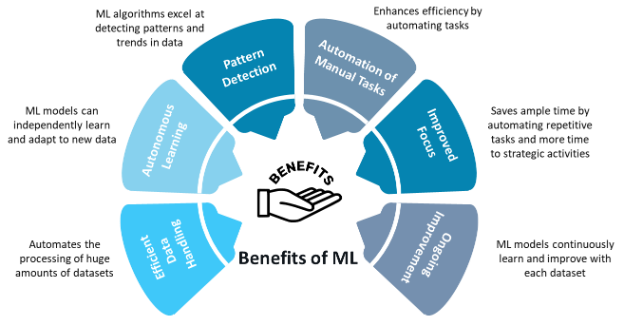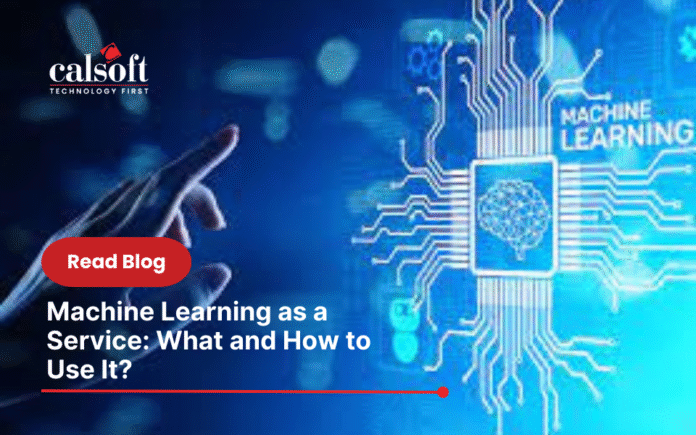Machine learning (ML) has become a game changer across many businesses and organizations over the past decade. Its ability to analyze vast amounts of data has revolutionized decision-making processes and operational efficiencies. Indeed, it is anticipated that the global ML industry is expected to grow from USD 47.99 billion in 2025 to USD 309.68 billion by 2032, exhibiting a CAGR of 30.5% during the forecast period.
To sustain this growth, ML engineers and data scientists are tasked with creating more models to keep up with the ever-changing needs of businesses. However, just building models is often not enough. You must maintain these models, monitor their performance, scale them, and experiment with innovative ideas. Meeting business demands at scale can often seem impossible, but with Machine Learning as a Service (MLaaS), businesses can manage these complexities and solve issues more easily. This guide offers insights into MLaaS, including its use case, benefits and best ML tools.
What is ML and MLaaS?
ML is a type of Artificial Intelligence (AI) that enables machines to automatically learn from data and past events. It can recognize patterns and can make predictions or estimates with minimal human intervention. MLaaS is a set of cloud-based platforms that provide machine learning tools which do not require deep technical skills. MLaaS helps with the following:
- Pre-built predictive analysis for different needs: Offers quick insights using tested models.
- Data preparation: Automates cleaning, normalization, and feature generation.
- Model training: Scalable compute lets you train large models efficiently.
- Workflow management: Visual pipelines reduce manual coding.
- Model deployment: Seamless integration into apps or production environments.

This reduces the need for businesses to invest in expensive hardware or hire data scientists to build and train ML models. MLaaS allows companies to access pre-built ML models and APIs to solve business challenges without needing their own experts. This facilitates real-time decision-making, enhanced insights, and quality services without requiring substantial initial investment and infrastructure.
Why Partner with Calsoft for Your MLaaS Journey
Calsoft brings deep expertise in cloud-based ML adoption, converting MLaaS potential into tangible results:
- Analytics and ML Strategy + MLOps Integration
Calsoft begins by assessing your current AI/ML maturity, then delivers a practical roadmap, which includes production-ready MLOps pipelines covering data prep, model deployment, and ongoing monitoring so you can scale securely and cost‑effectively.
Learn more on Challenges and Solutions around integrating LLMs into enterprises.
- Generative AI and Custom Models for Business Use Cases
With 25+ years in analytics, Calsoft tailors generative AI and ML models for your workflows at scale. Our proven tools include accelerators and fine-tuned models for chatbots, predictive analytics, and anomaly detection.
Discover how we can transform your data into actionable intelligence and improve productivity – Analytics ML Offerings to explore the possibilities.
What to Expect from MLaaS?
Many businesses want to leverage AI, so demand for MLaaS is on the rise. Here’s what you can expect from an ML platform as a service.


Data Management: As more companies move from storing data on-site to the cloud, the need to properly organize data arises. And as MLaaS platforms provide cloud storage, they help manage data for ML experiments, data pipelining, thus making it easier to access and process the data.
Access to ML tools: MLaaS providers offer tools like predictive analytics and data visualization along with APIs for sentiment analysis, facial recognition, healthcare, etc. Some platforms even provide drag-and-drop features for ML experimenting and model building.
Ease of use: MLaaS eliminates the need for tedious software installations. And as MLaaS providers’ data centers handle the actual computation, this creates an easy-to-use space, letting data scientists focus on improving models.
Cost Efficiency: Building and maintaining an ML workstation can be expensive. MLaaS offers significant cost savings by charging you only for the computing power you use. It cuts the upfront costs of hardware and software as well as maintenance costs.
Now that you have an idea about the capabilities of the ML platform as a service, let’s explore how to use ML as a service.
How to use MLaaS?
Want to learn how to use ML as a service for your organization? This section has you covered.
- Set your Goals: Outline the objective of the project clearly and research the subject. And assess your resources and determine your desired outcomes.
- Pick the right MLaaS solution: Search for an MLaaS provider or MLaaS solution that fits your project’s goals, time frame, and budget.
- Integrate and Deploy: Add the model to your existing system or workflow and post-deployment, ensure you can monitor and manage the ML algorithm’s performance.
- Ongoing Management: Remember, your work doesn’t end with deployment. Prepare for continuous monitoring, maintenance, and optimization.
What is MLaaS used for?
MLaaS can be applied to several tasks across different industries. Here are some ways MLaaS can make a change.
- Natural Language Processing: Gathers insights and automates responses by analyzing text data. And automatically categorizes support tickets into billing and technical issues.
- Forecasting: Predicts future trends and outcomes based on historical data.
- Data Exploration: Improves efficiency in visualizing and interpreting complex data.
- Anomaly Detection: Identifies unusual data patterns that could signal fraudulent activities or other irregularities.
- Searching and Understanding Datasets: Enables non-technical users to interact with large datasets by converting natural language queries into SQL queries.
- Regression Analysis: Helps to analyze and understand the relationships between variables. For instance, determine how factors such as location, square footage, and the number of bedrooms affect property prices.
- Image Recognition: Helps to recognize and interpret objects in images. This technology is ideal for mobile apps and has various applications. Pinterest, for example, makes use of image recognition to improve user experience by identifying and categorizing visual content.
- Recommendation Engines: Predicts and suggests products or content based on user behavior and preferences. For instance, recommended movies on Netflix, products on Amazon, or songs on Spotify are based on user history.
Conclusion
ML as a service stands out as a transformation solution for organizations looking to use the power of machine learning while avoiding the complexities of setup and management. As you generate more data, investing in ML as a service for your company is a smart move for the future. When it comes to using machine learning effectively, Calsoft can be your ideal partner.
FAQ’s
Q1: What is Machine Learning as a Service (MLaaS)?
A. MLaaS is a cloud-based service that offers machine learning tools and infrastructure without needing in-house development.
Q2: How do businesses use MLaaS?
A. Companies use MLaaS for tasks like data analysis, predictive modeling, and automating decisions—all without building custom ML models.
Q3: Who are the top MLaaS providers?
A. Leading MLaaS providers include AWS SageMaker, Google Cloud AI Platform, Microsoft Azure ML, and IBM Watson.


